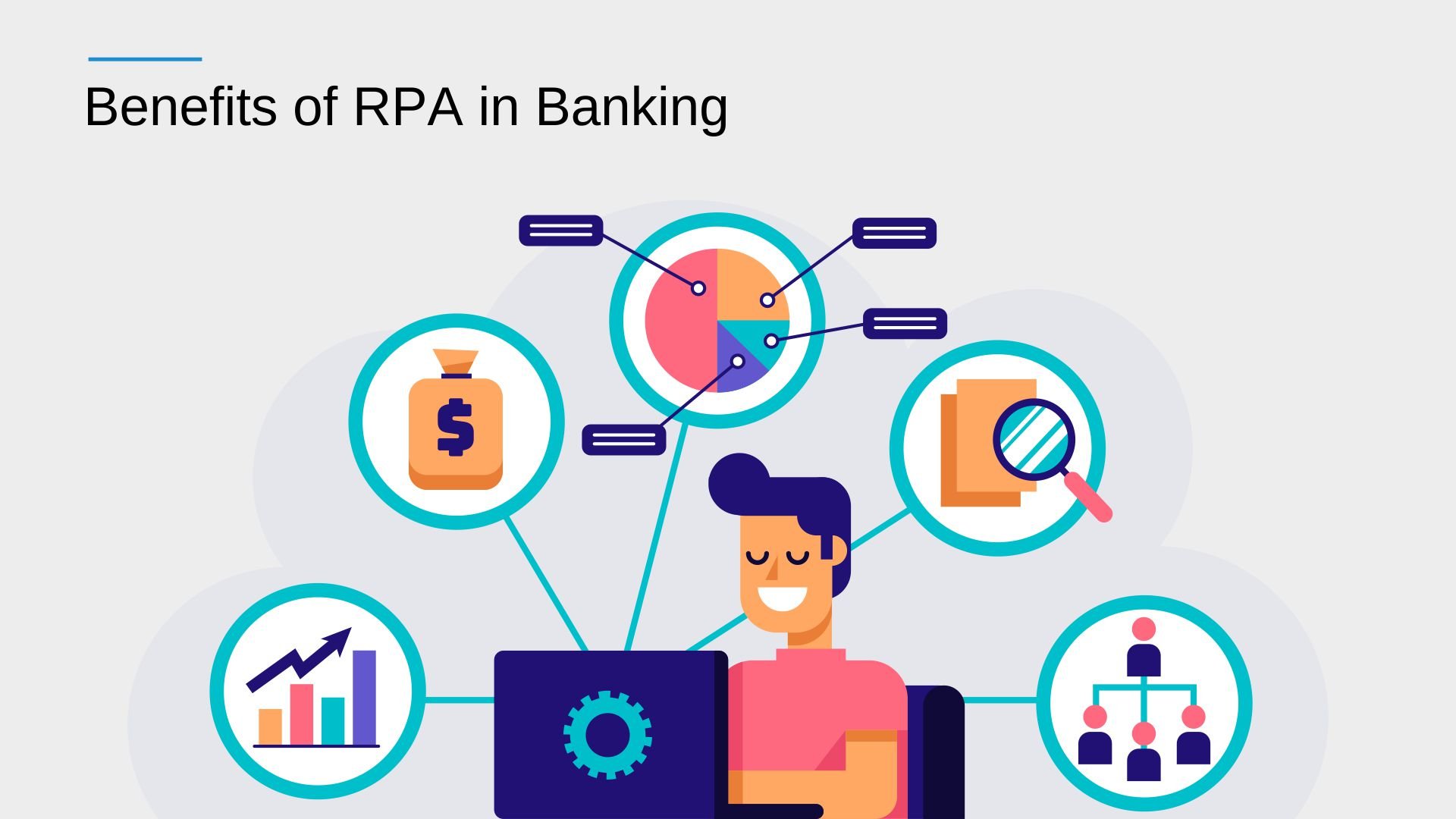The rapid evolution of technology has introduced a consumer base that expects things to be faster than ever. This has completely disrupted traditional business models; the banking sector is no exception. As a result, the banking sector faces increasing pressure to meet evolving customer demands to remain competitive.
To meet those demands, innovation has brought forth a game-changer called Robotic Process Automation (RPA). RPA hyperautomation promises to transform banks and other financial institutions into something faster, more efficient, cost-effective, and secure.
History and evolution of RPA in Banking
There has been a significant boom in the advancements of RPA over the last few decades. But the concept began taking shape due to screen scraping and Marco-based automation software tools of the late 1900s and early 2000s. Only recently did the industry - including the banking sector - understand the potential of RPA.
Various hyperautomation tools such as Cloud computing, Artificial Intelligence (AI) and Machine Learning (ML) showed enormous potential to lower operational cost, increase efficiency of processes, and enhance customer experiences.
RPA has shown the possibility of following data driven methodology with the help of using hyperautomation tools and historical data to come up with solutions.
Key applications of RPA in Banking
Here are some of the key applications of RPA in the banking sector.
Account opening and customer onboarding: RPA automates data entry, validation, and document verification during account opening. Thus effectively streamlining the onboarding process and improving customer experience.
Loan and mortgage processing: RPA reduces the processing time and enhances accuracy by automating tasks such as document collection, data extraction, and risk assessment. Therefore simplifying loan origination, underwriting, and approval processes.
Fraud detection and prevention: Responding to fraud incidents through the traditional system is difficult, but RPA simplifies it by monitoring transactions and flagging suspicious activities round the clock.
Compliance and regulatory reporting: Ensuring timely and accurate compliance with the ever-changing banking regulations is tricky. But RPA makes it accessible through collecting, analyzing, and submitting regulatory data.
Above are some of the key applications of RPA in the banking sector, which continue to enhance the efficiency of financial institutions.
Benefits of RPA in Banking

RPA offers numerous benefits to the banking sector; some of the key benefits include:
Improved operational efficiency: RPA's primary capability is automating repetitive tasks, enabling banks to process high volumes of data with greater accuracy. Resulting in improved operational efficiency.
Customer service and support: Banks spend over $600 million annually on customer service and support. Implementing RPA can cut those expenses by nearly 49% while maintaining quality.
Reduced costs and human errors: Human errors cost banks billions of dollars annually. Automation minimizes manual intervention, reduces human errors and their associated costs.
These are some of the benefits that demonstrate how RPA can revolutionize the banking sector.
Challenges of RPA implementation
There are several challenges that banking institutions may face during the implementation and integration of these technologies. Some key challenges include:
Integration with existing systems: The current banking practices operate primarily on outdated legacy systems. This makes merging RPA with the said systems complicated and time-consuming.
Data privacy and security: Banks are the favourite target of hacking attempts, and thus ensuring data security is highly critical. When implementing RPA, the system must comply with data protection regulations and have stringent security measures.
Employee resistance: The introduction of RPA and hyperautomation has been met with resistance from banking employees. There need to be adequate change management practices in place to avoid this.
Ensuring regulatory compliance: Banking and financial institutions are full of regulations, and RPA must comply with every single one. This requires meticulous planning and risk assessment of the ongoing RPA implementation.
Selection of appropriate RPA tools and vendors: Selecting the right RPA hyperautomation tools is tricky and is essential for successful implementation. Banking institutions must thoroughly understand their systems and requirements in order to select the RPA tools that best fit their needs.
Successful implementation of RPA hyperautomation in banking begins by addressing the above challenges. But one can't deny that RPA can provide a competitive edge when fully implemented.
Future outlook of RPA & Hyperautomation in the Banking sector
The future of RPA & Hyperautomation technology in the banking sector is promising as financial institutions pursue innovative ways to leverage RPA and Hyperautomation. A sharp rise in hyperautomation companies in India has also been witnessed.
How RPA can benefit the banking sector in the near future.
Hyperautomation: Full-scale hyperautomation will combine RPA and NPL, ML, cloud computing, advanced analytics, and AI frameworks to create better automation services. This will result in highly optimized workflows resulting in reduced turnaround times and better customer service.
Personalized customer experiences: The data-centric nature of RPA & Hyperautomation make them the best at building strong customer relationships. This is perfect for banks looking to offer targeted services to their customers.
Workforce transformation: As RPA tools keep evolving, the role of humans in the banking sector will also evolve. One can expect a sharp cut in repetitive tasks and a rise in tasks that require creativity and problem-solving skill sets.
With the potential to reshape the banking industry, RPAcould provide even more opportunities for growth and success.
Conclusion
As technological evolution continues reshaping banking practices RPA and hyperautomation tools will play a critical role in driving the digital transformation of the banking sector. Banks that fully embrace RPA hyperautomation services will enhance their workflow and gain a competitive edge in the long run.
Schedule a call with us if you're looking for automation experts to begin your digital transformation journey the right way.
